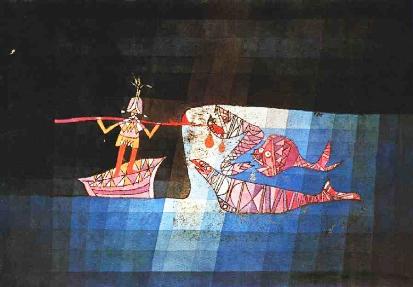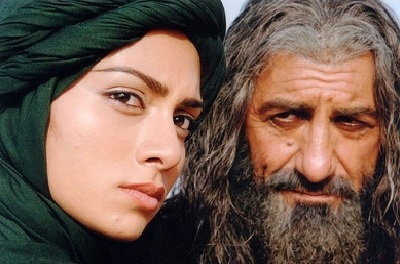The Voyages of Sinbad tell of giant, magical creatures: whales the size of islands, snakes so large that they could swallow elephants, and rukh (roc) birds so large that they could carry a caravan of men on their backs. Tales of these creatures repeated across cultures and through the ages has made most readers assume that they were simply pigments of a colorful imagination – works of fiction. But what if these creatures were real? What if the fictionalized accounts were based on the observations of early travelers that were tainted by mysticism and embellished over time by the repetition of stories in an oral tradition? Remember, maps in the medieval world portrayed demons and the edge of the world was thought to be a very real place.
In part at least, the Voyages of Sinbad are based on the voyages of Soleiman Siraf – the first western Asian man to navigate the seas from his home in Siraf, Persia, to Western India, around the Malabar coast and across the Bay of Bengal to Burma, Thailand and eventually to Southern China through the Straits of Malacca. He sailed around 775 and his voyages were recorded almost 70 years later by Abu Zaid al Hassan in his Siraf & Soleiman the Merchant in 851 ACE.

Siraf sought to open a route to China for western trade so that Persia was not simply the recipient of goods from the east and subject to the inflationary markup of the many merchants the goods had to pass through. Great Chinese ships carrying goods to Indonesia, India and beyond to Arabia and the Persian Gulf were already seen at the larger, deeper ports capable of hosting large ships. These ships carried, silks, pearls and other precious stones, porcelain, nutmeg, cloves and cinnamon indicating that Chinese merchants made many stops along their way to the western seas. But until Siraf, no western trader had ever navigated his way back to China to trade directly with the Chinese and the other countries along the way. In sailing and travelling all the way to China and back, Siraf was opening the doors to two-way trade on the Maritime Silk Road.
Sailing almost 500 years before Marco Polo and his family departed Italy for China, Siraf’s voyages have gained little attention in the west outside of academic circles – until now. An Iranian film by director Mohammad Bozorgnia that just opened at the Kish film festival celebrates the life and travels of Siraf and his companions. The film is told through the eyes of a fictionalized young man who participates in the voyage and records its details in a Watson to Holmes sort of relationship. Since the film is racking up awards in Iran, I hope that it will released internationally, at least on DVD – I would love to see it.
Building on the extensive knowledge of Arab and Persian geographers of the time – who had already described Southern Europe and Asia, Northwest and eastern Africa to Madagascar, and the Malabar coast – Siraf first navigated across the northern Arabian Sea to around the Gulf of Cambay (Khambhat) and then down to Kollam. Given the importance of trade to the merchants of the Tang Dynasty, the presence of Chinese traders in Kollam was fairly common, but sizeable permanent settlements of Chinese on India’s western coast didn’t begin until the Yuan Dynasty several hundred years later – and indication of how trade grew with the opening of a two-way maritime route.

As to the stories themselves, the origins of the Voyages of Sinbad are more or less contemporaneous with the publication of the account of Soleiman Siraf’s travels in the middle of the 9th Century ACE. Early Arabic manuscripts of One Thousand and One Nights do not include the Sinbad stories as part of Scheherazade’s tales. Rather, the Sinbad stories, which are legitimate regional folktales were added in the 18th Century by French traveler and translator Antoine Galland. Still, the stories have captured the imagination of people for centuries.
Whether as early accounts of a fantastic and dangerous world that can provide riches for those who dare depart familiar shores, or in the painting of Sinbad as a romantic a swashbuckling adventurer, or as stories for children to fuel their imaginations, the tales continue to be told. From Galland to Douglas Fairbanks Jr. to Dreamworks, Voyages of Sinbad have endured for more than 1000 years. And, in part, at least, they were inspired by a very real Persian man – Soleiman Siraf – who changed the face of maritime trade on the early Silk Road. (Words by Laura Kelley. Photos of The Maritime Silk Road Production Still, Sinbad by Paul Klee and Sinbad from Douglas Fairbanks to Dreamworks from Google images.)


Wear is The Tomb Of Sinbad?
Was he a real persom or fictisus?
I n the 7th voyage of Sinbad goes to
the Island of Collosal,wear he meets up wth a mad magician?
wear he fights a giant two headdeaad bird ,a cyclops and a
dragon?
Here in NZ the Maori people speak of Sinbad the Sailor fixing his sails in Fiordland in their folklore there is Sinbad Gulley on Google Earth and New Zealand once had the world’s LARGEST EAGLE called Haast Eagle it had a 3 metre wing span and could pick up a child their sketetal remains are in museums.. thanks from NZ 👍🇳🇿